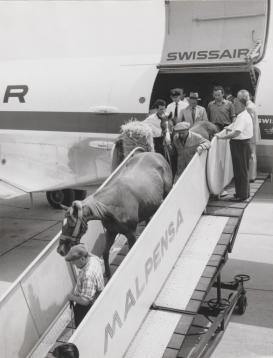Animals disturb airports in multiple ways while also being an integral part of their modus operandi. Airports create their own ecosystems that are embedded in local environments. At the same time, airports mobilize nature as cargo; for example, Lufthansa operates a whole terminal at Frankfurt Airport, so-called “Animal Lounge,” which is exclusively dedicated to the shipping of animals. Animals are thus important residents and users of traffic infrastructure. By focusing on animals in global cargo logistics at Frankfurt Airport, our interdisciplinary group project connects nature—and animals in particular—and airports as a research topic. Instead of disassociating technology and natural environments, we conceptualize it as a mixed, dynamic assemblage of life and technology, interwoven by a complex set of practices, institutions, and regimes of control. We particularly trace processes of hybridization and purification that the operation of modern airports involves and continuously generates, including the boundary work of sciences like ecology or logistics. One of the concepts we draw upon is Gloria Anzaldúas work on Mexican-US American “borderlands.” A history of animals at global air traffic hubs allows us to rethink some fundamental presuppositions concerning the "nature" of airports. Where does an airport begin and where does it end? How do the multiple infrastructures connect to each other as well as to the environment? The answer to these questions depends on which boundaries one focuses on, for instance geographic boundaries, historical, legal, economic, national, acoustic, and security-related boundaries. We are particularly interested in the ways in which biological-ecological boundaries have been practiced at Frankfurt airport, and in understanding how animals relate to global technological infrastructure.

Horses being unloaded from a Douglas DC-6a freighter. (ETH-Bibliothek Zürich, Bildarchiv/Stiftung Luftbild Schweiz, Photograph: Swissair LBS_SR12-21-042-AL/CC BY-SA 4.0)
http://doi.org/10.3932/ethz-a-000860358
Project
(2018-)
